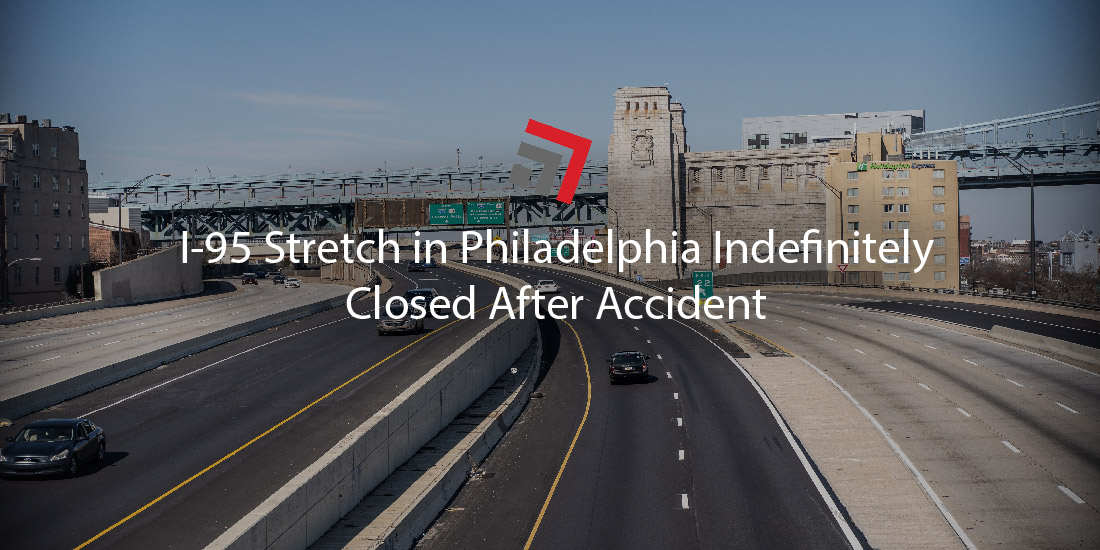UPDATE – June 28, 2023:
Far ahead of schedule, the collapsed section of I-95 in Philadelphia reopened June 23, less than two weeks after the initial accident.
The six-lane roadway is a temporary fix to get traffic flowing again on the busy interstate while crews begin working on construction of a permanent bridge.
The rapid response quells fears of week or even month-long closures of this crucial freight corridor. This is great news for ruckload movement across the East Coast, including cargoes to and from the nearby Port of Philadelphia.
For a closer look at the progress, please refer to Transport Topics’ article.
Accidents, like the one that’s about to be laid out, quickly reminds the motoring public of who it shares the road with.
While most of the time, hazmat haulers and tankers fly under the radar and carry out business as usual, these vehicles possess dangerous cargoes which are a major safety risk.
It’s rare, but when accidents do happen, they can bring along devastating consequences, like what happened last week.
An elevated section of Interstate 95 in Philadelphia collapsed early June 11 after a tanker truck carrying flammable cargo caught ablaze.
Northbound lanes of this I-95 stretch were wiped out while southbound lanes were structurally compromised due to heat from the fire.
It’s speculated the tanker got into some kind of crash on a ramp underneath the interstate early morning.
The truck reportedly was carrying petroleum product that may have been hundreds of gallons of gasoline. The fire took around an hour to get under control.
I-95 in Northeast Philly closed indefinitely, delays are expected
Transportation officials are warning of extensive delays and street closures, as a result. Motorists are urged to avoid the interstate as all lanes are closed through Northeast Philadelphia and comply with a 43-mile detour around the accident-zone.
According to an advisory on Google Maps, the current detour routes from PennDOT are as follows: Southbound Detour: I-95 SB traffic to use Exit 35 to PA 63 WB to US 1 SB to I-76 EB to I-676 EB to I-95 SB at Exit 22. Northbound Detour: I-95 NB traffic to use Exit 22 to I-676 WB to I-76 WB to US 1 NB to PA 63 EB to I-95 NB.
The same day, Pennsylvania Governor Josh Shapiro issued a disaster declaration to hasten support of federal funds.
At a presser days later, Shapiro declined on an exact timeframe, but said crews will work 24 hours a day to reopen the roadway, which the governor called a key part of the state’s economy.
While there’s no concrete timeline on when the closed-off sections of I-95 will reopen, officials are reportedly considering temporary structures to expediate the process.
Crews are not expected to immediately rebuild the collapsed section of interstate, but instead fill gaps by piling many tons of recycled glass aggregate into the underpass area (where the fire was), bringing it up to surface level. Crews will then pave it over so three lanes of traffic can reopen each way.
After that, a replacement bridge is expected to be constructed next to the area to reroute traffic while crews begin more permanent work on restoring and recovering the lost infrastructure.
Trucking needs creativity to work around no I-95 access
Transportation Secretary Pete Buttigieg has been in contact with city and state officials, while the FHA is asking surrounding states, like New Jersey and Delaware, to alert their motoring public of closures.
The U.S. DOT contributed $3 million in immediate emergency relief.
Buttigieg tweeted, “[I-95] is a major artery for people and goods, and the closure will have significant impacts on the city and region…our department will be there with support.”
However, it shouldn’t take the insight of a transport professional to know I-95’s importance as a premier freight corridor on America’s East Coast.
Stretching vertically from Maine to South Florida, I-95 is colossal travel lane that runs through major cities, like Philadelphia, New York, Miami, and Washington. The interstate is nearly 2,000 miles long.
Buttigieg acquiesced truck drivers will have to take longer and more costly routes to work around the closure, but insists the industry is “creative [and]…find ways to adapt.”
Final Thoughts
The closed stretch of I-95 is also near the Port of Philadelphia (PhilaPort), one of the East Coast’s busiest trade hubs, particularly for refrigerated cargoes.
Trucks leaving PhilaPort normally have direct access to the major interstate, however thanks to the closure, they will have to navigate the posted detours instead.
However, many of the alternative roadways are not designed to accommodate large commercial vehicles and lack trucking parking and facilities, a luxury already far and few.
Please contact us if you have any questions regarding this topic or any others in domestic logistics. In addition, stay up to date with weekly headlines from both trucking and rail via our Road Map newsletter.
More blogs similar to this:



Recent Comments